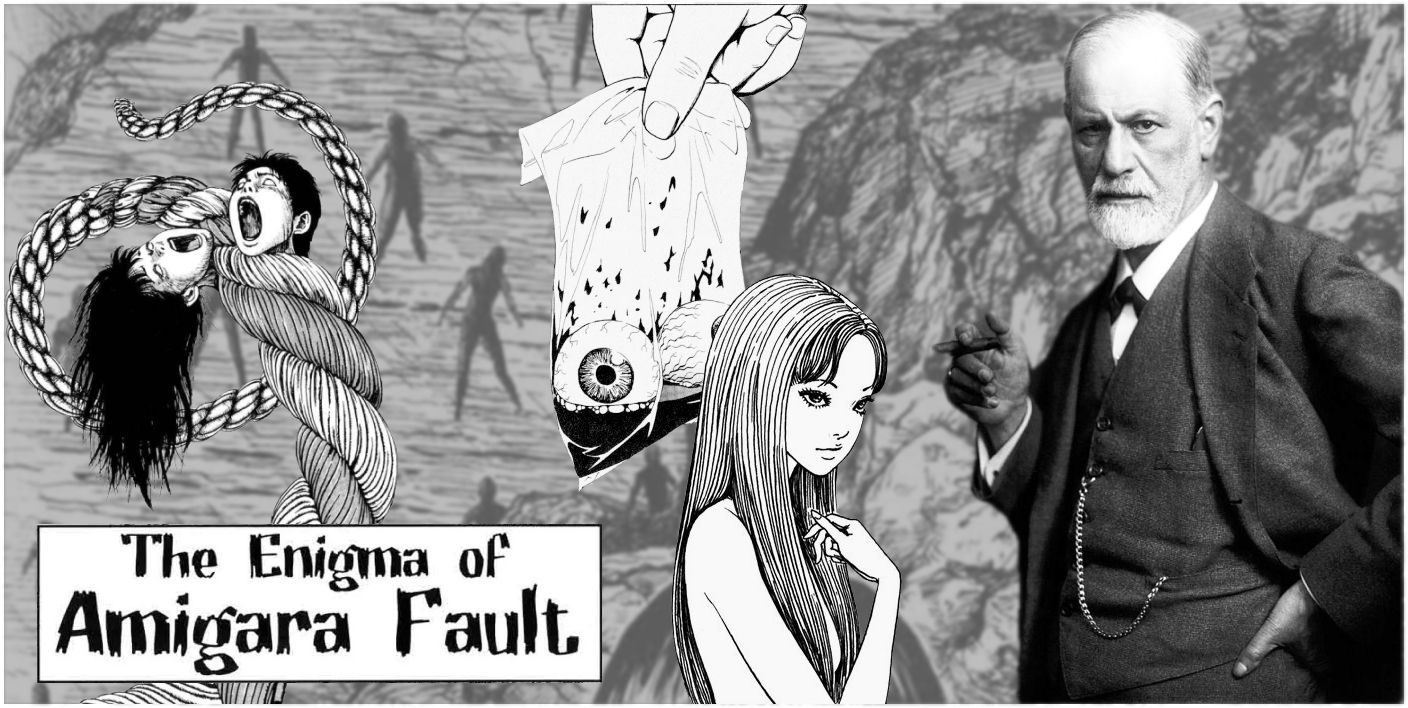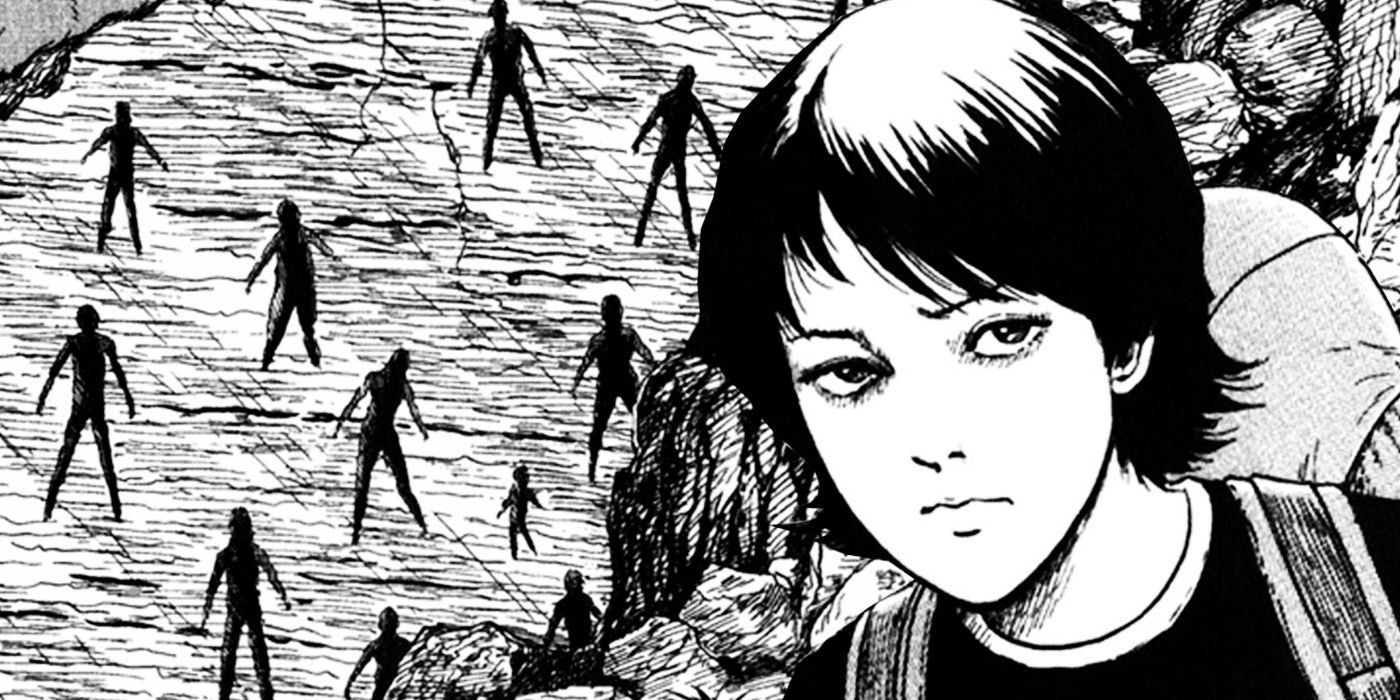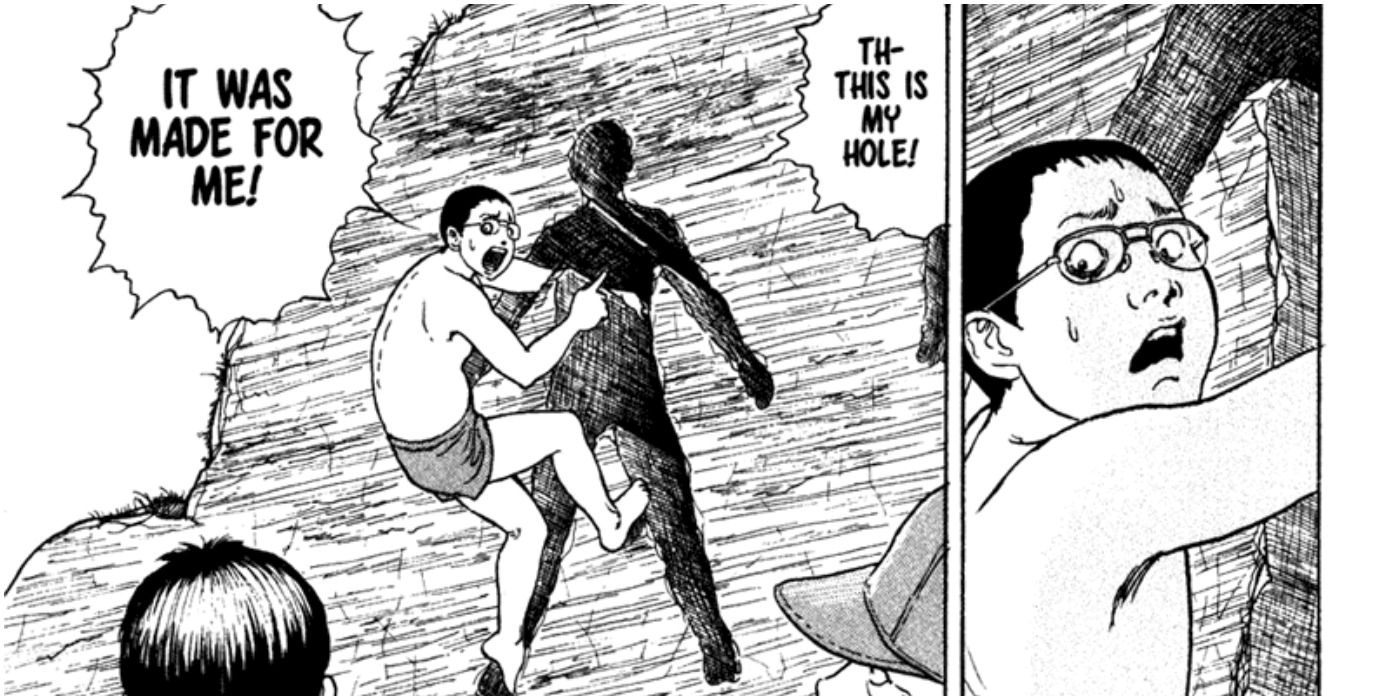This article discusses suicide and self-harm.
The Enigma of Amigara Fault is a short story by Junji Ito that is included at the end of one of his seminal works, Gyo. The tale follows Owaki and Yoshida who, like many others, have been drawn to an unnamed prefecture of Japan after a fault is discovered on Amigara Mountain. The peculiar site is filled with countless human-shaped holes in the rock face that have been revealed due to a recent earthquake.
While this Junji Ito story doesn’t contain alien creatures, grotesque monsters or panels that portray copious amounts of blood, it still manages to instill a sense of horror in its viewers. The Enigma of Amigara Fault is not only incredibly mysterious but psychological, leaving readers as captivated with its ancient holes as the protagonists they follow. Ultimately, it’s difficult to escape the tales disturbing Lovecraftian sense of doom even days after reading.
The Origin Of The Holes
The origin of the human-shaped holes is never fully explained. In one scene, Owaki has a dream in which he is a criminal from an ancient past. As punishment for committing a heinous crime, he is sentenced to enter a chasm that appears to have been specifically created for him. As he moves through the passage, his body becomes deformed to the point that any human being could not survive, yet he remains sentient and screaming in agony.
While these tunnels might be the invention of an ancient civilization that used technology unknown to the modern world, it remains a mystery as to how and why they precisely match the bodies of people from the present. Readers are left wondering if Owaki was simply dreaming or if this past society had a part in the foundation of these mysterious holes. Ito allows the reader to wander through the dark corridors of their mind as they attempt to find a solution to this problem. From origins pertaining to alien creatures to demonic forces, a myriad of possibilities exists.
The lack of any substantial explanation enables the reader to create their own horror. Both the origin and purpose of these chambers will completely depend on who is observing The Enigma of Amigara Fault unfold. In doing so, Ito holds up a mirror to the reader and poses the question: what are people truly afraid of? While decapitated heads, creatures from the deep or psychologically disturbed characters are certainly scary, there is nothing more horrifying than being unaware of the darkness inside oneself.
The Holes Freudian Symbolism
Possibly the most frightening aspect of these human-shaped holes is that people feel an irresistible need to enter them. Despite being aware that the result of such an action is certain death, people continue to do everything in their power to find a hole that was “made for them.” Sigmund Freud would describe this feeling as a “death drive” -- an unconscious instinct that seeks to destroy the individual.
The Enigma of Amigara Fault arguably has no distinguishable enemy other than the people contained within it. While the holes themselves might be considered to have some mysterious hold over the story's characters, it’s far more chilling to think that their destruction stems only from themselves. In Freud’s view, “The aim of all life is death.” In light of this, Owaki and Yoshida appear to want to return to “something that would seem more primitive, more elementary, more instinctual” than the pleasure that life brings them.
Ito’s use of a hole to play out this psychological drama appears to have been done with great purpose. In Otto Rank’s 1924 book The Trauma of Birth, he postulates that a person's first experience of anxiety occurs when they are separated from their mother's womb. Consequently, many have a powerful desire to return to this space in an effort to re-live their trauma. When Owaki crawls through the holes' passages, he is symbolically traveling back to the point of his birth, at which point he enters a state of being that is neither alive nor dead.
The Enigma of Amigara Fault is a disturbing introspective tale that questions the innate human instinct of self-destruction. While on the surface, it may be considered simply another story in which curiosity killed the cat, it instead manages to get under the reader's skin and examine topics that are far more sinister and revealing than one might originally expect.
Ito’s masterful use of Freudian psychology, symbolism and attention to what makes people fearful is expertly played out in this short story. The hypnotic pull of these human-shaped holes is possibly more frightening than any monster could be. Ultimately, Ito goes back to the basics of what makes people scared: dark and claustrophobic spaces with a sense of the unknown.



